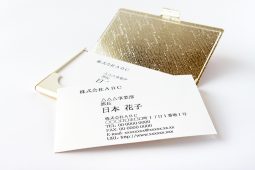So, you’ve got a job at a Japanese company. Congratulations! You’ve made it through the application and interview process, and now it’s actually time to go to work. The first day on the job is a nervous time no matter the country, but when you are working in another culture it can be even more intimidating. Studying ahead to get a feel for what can happen, and how you should act, can help to take a lot of the tension out of the process. Here, we offer a few tips on how to handle yourself, and discuss the kinds of things that might be happening.
Punctuality is King
First, one of the key things to remember is to on time. Punctuality is a cornerstone of working in Japan, and starting your first day with a late arrival really creates a bad impression. As such, before you actually begin your job take some time to explore the traffic connections and area around the office to make sure you know how to get there, and have the right connections to arrive on time.
In this case, though, “on time” really means at least ten minutes before your shift starts. Working time at most offices in Japan is exactly that: time when you are working. If your day starts at 9:00, then you should be at your spot ready to work when the clock hits 9:00, and not getting coffee, reading the paper, or any other of your morning preparations.
Look Professional
Make sure that you are extra well-dressed for your first day, even if your office tends toward the casual. It never hurts to go above and beyond when making a first impression. That means a dark suit, pressed and cleaned, and trimmed hair and all. You should look as fresh as you can.
Practice your Introduction
The self-introduction, or 自己紹介 jiko shoukai, is a fundamental part of business life in Japan. You should practice the art of describing who you are, where you’re from, and what you do in Japanese even if your language skills aren’t yet fluent. You’re going to be doing this a lot! Here are some useful phrases:
- The standard starter is: Hajimemashite はじめまして。 (Hello, nice to meet you.)
Kyou kara shin’nyuu shain desu. 今日から新入社員です。 (I am a new employee here from today.) - Then, of course, your name and where you are from.
OO to moushimasu. OOと申します。 (My name is OO.)
OO no shusshin desu. OOの出身です。 (I am from OO). - And to finish up:
Yoroshikuonegaishimasu. よろしくお願いします。
Brush Up on Etiquette
You will be meeting a lot of new people, and most likely exchanging cards with a few of them. There may also be meetings to deal with, and so it never hurts to brush up on the proper way of doing things. There are articles here on WorkInJapan.Today about those topics in case you need pointers, but some basics are: hand your card over using both hands, and keep it lower than higher-ranked people; keep the card you receive out and visible on your card case until others put their cards away; be aware of the seniority of meeting members to make sure you don’t take an important person’s seat.
While expectations for new employees, especially non-Japanese ones, can be lower when it comes to issues like these, showing an awareness of them can really help make a good impression.
Be Prepared for the Flow
Some companies will follow a traditional patter for new hires, and you might find yourself part of it.It won’t hurt to be ready.
- Orientation Meeting
Shin-jin kenshu 新人監修
This is a session teaching new hires about the company, the industry, and such. You will be able to meet other new hires, as well as current employees. - Morning / Evening meetings
Many companies start every day with a chourei ちょうれい 朝礼 which is kind of a morning greeting and touch-base meeting, as well as an end-of-day shuurei しゅうれい 終礼 to close the workday. The patterns will differ by company, so just follow the lead of your coworkers.
Aisatsu, Aisatsu, Aisatsu!
Japanese people are trained from childhood to offer appropriate greetings morning, noon, and night, and being able to offer your own. First thing in the morning, the greeting is ohayougozaimasu おはようございます (good morning!) Offered with a nice big voice, and a bow as you enter the room.
On the way out at the end of the day, make sure to offer otsukaresamadesu おつかれさまです (thanks for your hard work). If you are leaving before someone else, a polite osakini shitsureishimasu お先に失礼します (Pardon me for leaving before you).








